Smithsonian and the State Department team up for global impact
A new agreement renews the working relationship between the two organizations and strengthens a framework for collaboration.
As the Smithsonian continues to work toward our goal of building our shared, sustainable future, addressing our most pressing challenges as the world’s largest museum, education, and research complex requires a global perspective. We must connect our research and knowledge to policymakers and communities by working with and through trusted partners. The Smithsonian’s Office of International Relations, which stewards our institutional relationships with foreign governments, the diplomatic corps, and key multilateral organizations, is pleased strengthen the Institution’s critical partnership with the U.S. Department of State to further our shared goals for global impact.
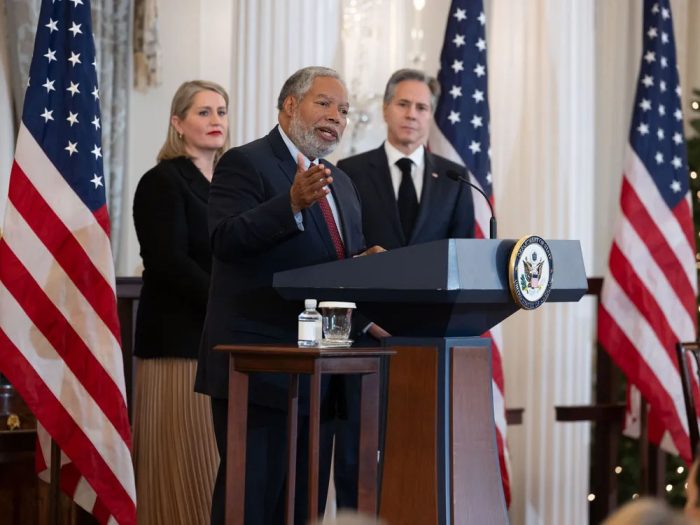
Secretary Lonnie Bunch speaks at the December signing ceremony, flanked by Secretary of State Antony Blinken and Under Secretary for Public Diplomacy Liz Allen. (Chuck Kennedy / Department of State)
In December, Smithsonian Secretary Lonnie G. Bunch III and U.S. Secretary of State Antony J. Blinken signed an agreement that outlines a framework for the two organizations to collaboratively develop and deliver impactful programming and knowledge exchange across culture and the arts, science and conservation, and education. While the Smithsonian has long worked in concert with the State Department, this new agreement signals an intention on the part of the Smithsonian to ramp up its global work in service of its broader mission.
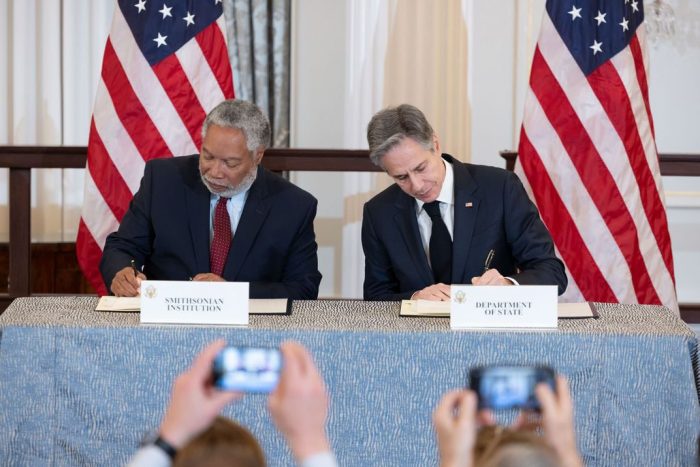
Secretaries Blinken and Bunch sign the agreement. (Chuck Kennedy / Department of State)
Ultimately, we’re here today because the Smithsonian can better serve the public—in DC, across the United States, and around the world—when we don’t go it alone,” said Secretary Bunch at the signing event. “Unleashing our full potential to do good in the world requires that we work with other non-profits, communities, and governments. The State Department makes that possible,” he continued.
The new agreement builds on decades of successful partnership and programming between the two organizations and fosters additional opportunities to advance mutual priorities, such as addressing the climate crisis, preserving and protecting cultural heritage, and empowering the next generation of science and culture professionals. The Smithsonian, for example, will continue to work with State’s Cultural Heritage Center in developing capacity-exchange programs, such as a current program connecting a cohort of African Cultural Heritage Fellows with Smithsonian museum professionals to cultivate dialogue around new perspectives on African and American museological practice. Exchange programs such as this one enrich the Smithsonian’s understanding of the diverse communities it serves and helps shape its approach to interpreting, displaying, and caring for its collections, while program participants develop new tools to protect, preserve, and share their own cultural heritage. The new agreement aims to scale up such programs and elevate the voices of those who have for too long been excluded from national and global historical narratives.
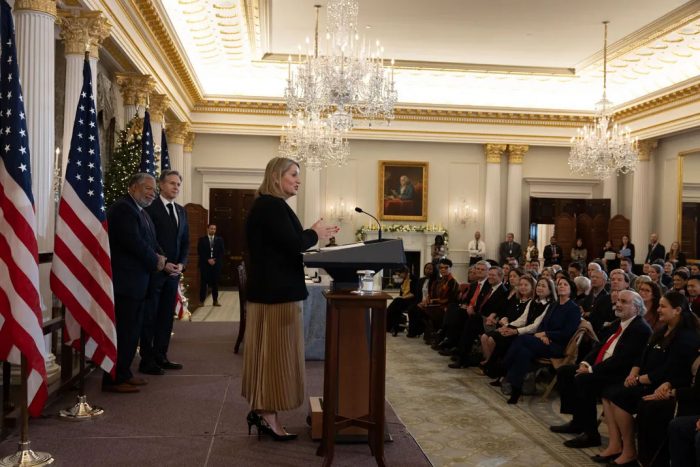
Under Secretary for Public Diplomacy Liz Allen addresses the crowd at the signing ceremony. (Chuck Kennedy / Department of State)
The exchange of ideas, capacity, and perspective is also integral to the Smithsonian-State partnership itself: a notable component of the previous Smithsonian and State cooperation was the regular detail of a Senior Foreign Service Officer to the Smithsonian’s Office of International Relations. Staffed by seasoned diplomats steeped in public diplomacy, including former ambassadors, the position has been vital to the continued cooperation of two complex organizations with ambitious global reach. Following the signing of the new agreement, an additional detail from State’s Bureau of Oceans, International Environmental and Scientific Affairs will join the Smithsonian team with a focus on science, technology, environmental protection, and public health. Additionally, Smithsonian scientists will participate in State’s Embassy Science Fellows program, travelling to U.S. embassies abroad to share their expertise in addressing local and regional challenges of global importance, from environmental disaster response to the future of artificial intelligence.
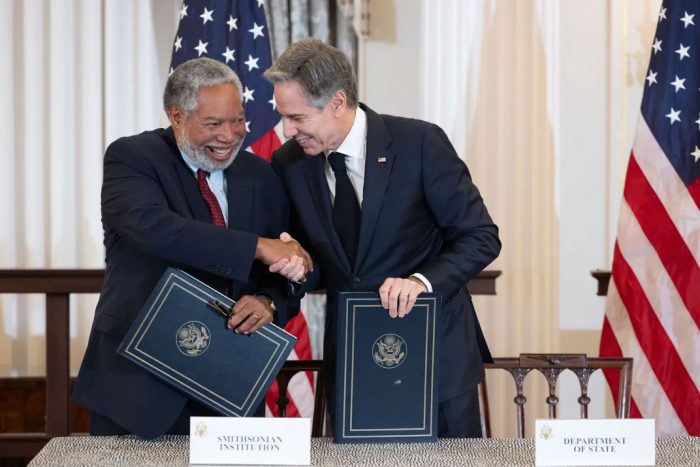
Secretaries Blinken and Bunch celebrate the new agreement. Chuck Kennedy / Department of State
At the signing, Secretary Blinken made clear that the scale of the Smithsonian’s work is inherently global: “The biggest challenges of our era – from the warming climate and rising inequality to food insecurity and democratic backsliding – are fundamentally global in nature; unconstrained by national borders or geographic boundaries.” He agreed with Secretary Bunch on the value of scientific and cultural exchange: “By bringing together experts – scientists, historians, artists, and researchers – from across the globe, we can swap solutions, team up to develop new ones, and share the benefits of what we learn with people worldwide.”
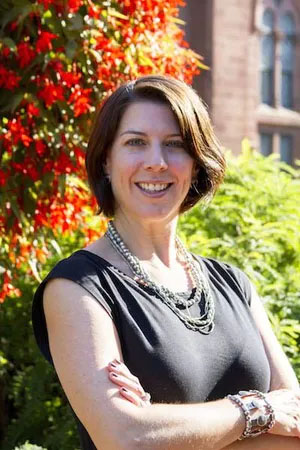
Aviva Rosenthal
Aviva Rosenthal is the director of the Smithsonian’s Office of International Relations. She manages a vast portfolio of strategic partnerships between the Smithsonian and international governments, foundations, NGOs and other organizations, as well as ongoing collaborations between the Smithsonian and various U.S. federal agencies with a focus on the U.S. Department of State.
This post was originally published by the Smithsonian magazine blog, Smithsonian Voices. Copyright 2023 Smithsonian Institution. Reprinted with permission from Smithsonian Enterprises. All rights reserved. Reproduction in any medium is strictly prohibited without permission from Smithsonian Institution.
Posted: 2 January 2024
-
Categories:
Administrative News , Collaboration , Feature Stories , News & Announcements







